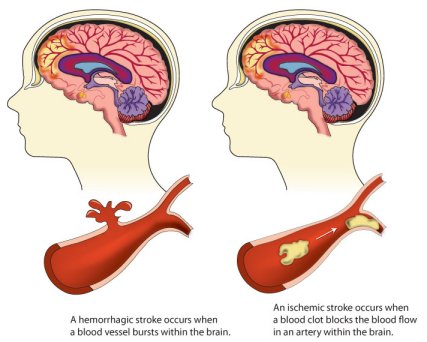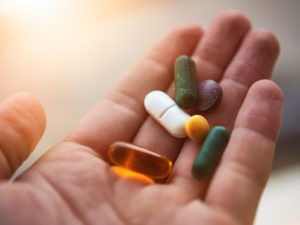
Diagnosed with Cancer? Your two greatest challenges are understanding cancer and understanding possible side effects from chemo and radiation. Knowledge is Power!
Learn about conventional, complementary, and integrative therapies.
Dealing with treatment side effects? Learn about evidence-based therapies to alleviate your symptoms.
Click the orange button to the right to learn more.
- You are here:
- Home »
- Blog »
- side effects ID and prevention »
- Complementary Stroke Therapies
Complementary Stroke Therapies

Complementary stroke therapies are therapies that can work with and even can enhance conventional stroke therapies. Complementary therapies are not alternative or integrative therapies.
I am a long-term cancer survivor. I developed chemtherapy-induced cardiomyopathy and chronic atrial fibrillation in late 2010. As a result of this side effect, I worry about having a stroke. And because I am a bit negative when it comes to conventional medicines, I have researched and write about complementary therapies.
Let me go on record as saying that I am not any sort of medical professional. I have benefited from several types of complementary therapies for
- chronic pain
- heart health therapy and
- cancer therapy
I do believe that patients must communicate with their medical doctors. In my experience however, conventional medicine does not always promote non-conventional therapies.
So here we are.
Have you had a stroke? Are you a cancer survivor managing chronic pain? If you’d like to learn more about complementary therapies send me an email- David.PeopleBeatingCancer@gmail.com
Hang in there,
David Emerson
- Cancer Survivor
- Cancer Coach
- Director PeopleBeatingCancer
Stroke
“Ischemic stroke
To treat an ischemic stroke, blood flow must quickly be restored to the brain. This may be done with:
- Emergency IV medicine. An IV medicine that can break up a clot has to be given within 4.5 hours from when symptoms began. The sooner the medicine is given, the better. Quick treatment improves your chances of survival and may reduce complications.An IV injection of recombinant tissue plasminogen activator (TPA) is the gold standard treatment for ischemic stroke. The two types of TPA are alteplase (Activase) and tenecteplase (TNKase). An injection of TPA is usually given through a vein in the arm within the first three hours. Sometimes, TPA can be given up to 4.5 hours after stroke symptoms started…”
6 Complementary and Alternative Therapies for Stroke
“Doctors often prescribe standard medical care, like medication and therapy, after a person has a stroke. But research shows that complementary and alternative medicine (CAM) therapies, like acupuncture, yoga, and massage therapy, can also benefit people who have had a stroke.
“Herbal or vitamin supplements, acupuncture, massage, and meditation have all been used to help with symptom relief, increase mobility, and improve mood and outlook after stroke,” says Koto Ishida, MD, clinical director of the Center for Stroke and Neurovascular Diseases at NYU Langone in New York City.
Here are six evidence-backed ways to treat a stroke using complementary and alternative medicines:
1. Acupuncture Reduces Pain and Depression
Acupuncture is an ancient Chinese complementary medicine that involves penetrating the skin with fine needles. In addition to being safe and inexpensive, acupuncture is a promising alternative approach to stroke recovery.
“Studies suggest that acupuncture after a stroke may improve problems with pain, spasticity, physical functions, quality of life, and cognitive functions,” says Yu-Ching Hsu, Chinese medicine doctor at Tainan Hospital, Ministry of Health and Welfare, in Tainan, Taiwan…
Acupuncture has been used as a form of stroke rehabilitation in China for thousands of years, though it’s becoming increasingly practiced in Western countries, according to a study published in the journal Acupuncture in Medicine.
“While acupuncture may also facilitate recovery of function and independence, it also has the added advantage of improving nervous system function more directly,” Narda G. Robinson, DO, President and CEO of the CuraCore Integrative Medicine & Education Centers in the United States and Canada, says.
“Acupuncture works by sending corrective signals into the nervous system to activate self-healing processes and encourage proper firing of nerve impulses in the brain, spinal cord, and peripheral nerves. It also relaxes tense muscles and reduces inflammation, thereby helping with the pain and spasticity that stroke patients may experience.”
A review published in October 2017 in the International Journal of Molecular Scienceslooked at the effectiveness of acupuncture as a treatment for ischemic stroke and found that the treatment promotes the growth and development of tissue in the central nervous system, regulates cerebral blood flow in the ischemic area, and improves long-term memory after a stroke…
2. Yoga Can Help Increase Range of Motion
Problems with balance and coordination are common after a stroke, and practicing yoga may help you improve those impairments.
A study published in 2014 in American Journal of Recreation Therapy examined the effects of yoga on 26 individuals with chronic stroke. After an eight-week yoga intervention, participants reported improved emotional regulation, increased stability and range of motion, and improvements in activity and participation….
3. Tai Chi Helps Improve Balance
Tai Chi is an ancient Chinese tradition that involves a series of slow movements and stretches coupled with deep breathing. The body and mind work together to perform coordinated movements by focusing on each posture as it flows to the next, according to the Mayo Clinic.
Research shows that the practice can help stroke patients improve balance, too. A review published in May 2018 in the journal Clinical Rehabilitation looked at 10 studies involving over 700 participants who suffered from neurological disorders and found that tai chi was effective in reducing fall incidences in Parkinson’s disease and stroke.
4. Massage Therapy Can Improve Fine Motor Skills
Massage therapy is the manipulation of body tissues in order to enhance a person’s health and well-being. A study published in 2012 in the Journal of Chinese Integrative Medicine found that Thai massage and herbal treatments can improve daily function, mood, sleep patterns, and pain in individuals who have suffered a stroke. Massages can help people who have had a stroke by relieving pain, and improving sleep and mood.
There’s also research to support that certain types of massage can lead to improvements in fine motor skills…
5. Aromatherapy Relieves Stress
Aromatherapy is the use of essential oils and plant extracts in massages or baths for relaxation. This natural stress-relieving remedy has even been shown to help with depression, migraines, pain, anxiety, and restless leg syndrome.
For stroke patients, aromatherapy may be an alternative therapy option. A small study published in August 2017 in the Journal of Physical Therapy Science divided 14 stroke patients into two groups: one was administered a back massage and foot bath using an essential oil five times in one week, and the other group received the same therapy without the oils…
6. Herbal Supplements May Improve Neurological Function
Herbal supplements, also called botanicals, have been used for thousands of years for medicinal purposes.
After evaluating 28 trials that included over 2,000 patients, in a meta-analysis published in December 2017 in the journal Medicine, researchers found that some patented Chinese herbal supplements — Shuxuetong, Mailuoning, Xuesaitong, and Buchang Naoxintong — may improve neurological function and the ability to participate in activities of daily living in stroke patients.
“For some of the supplements, it is important to note that these are not FDA-approved [Food and Drug Administration] and therefore do not undergo the rigorous screening requirements of prescription medications,” Dr. Ishida says. “This means you can’t be as certain about the purity or quality of the ingredients and there may be differences across brands or even batches within the same brand.”
Ishida recommends always speaking with your doctor before using supplements because there could be risks or interactions with other drugs.


